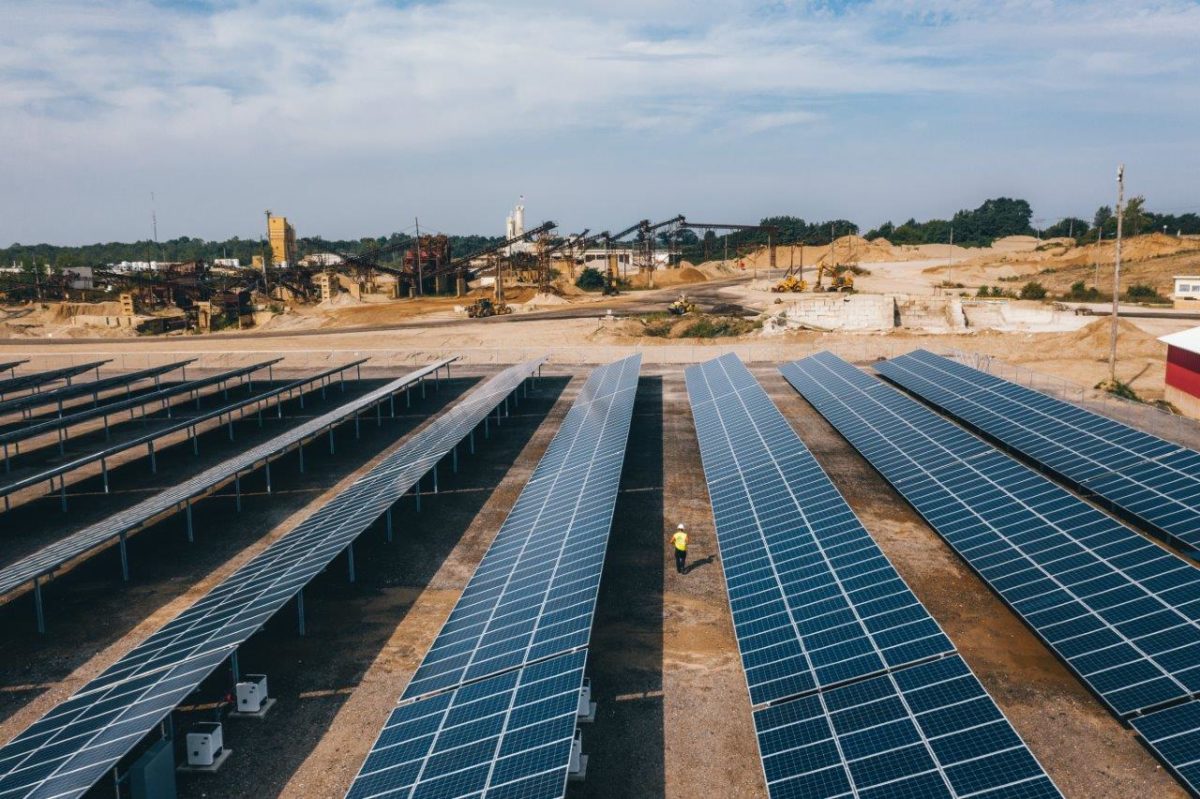State regulators Tuesday approved a $1.8 billion plan by Florida Power & Light to add 20 solar-power plants by the middle of next year. The Florida Public Service Commission’s decision came after its staff recommended rejecting the utility’s “SolarTogether” program because of the way it is structured. The plan also drew opposition from the state Office of Public Counsel, which represents consumers in utility issues. But commissioners said the program, which involves adding a total of 1,490 megawatts of solar capacity, will expand renewable energy and reduce the state’s reliance on fossil fuels to generate electricity. FPL had backing from Walmart, the Southern Alliance for Clean Energy and Vote Solar. Source: The News Service of Florida
Bernie Sanders’s publicly owned clean power proposal is actually pretty tame. The U.S. has a long history of nationalizing in times of crisis. Whether Sanders’s platform really calls for taking over “major parts” of the economy is up for debate. His Green New Deal plan does call for publicly owned clean power generation, and he’s joined calls in California to bring PG&E—the bankrupt California utility—under the control of the state government there. Sanders isn’t the first politician to propose public ownership of parts of the power sector. In his successful 1932 presidential bid, Franklin D. Roosevelt railed against the “monstrosity” of private utility holding companies and argued that people should have the right to take control of their privately owned power lines. Source: The New Republic
Coal deliveries to U.S. power plants fell to 555.02 million short tons in 2019, down 6.7% from 594.68 million short tons delivered a year earlier, according to U.S. Energy Information Administration data released late Friday. Source: S&P Global Platts
Widespread shortfalls in solar irradiance across North America between 2017 and 2019 have impacted the performance of U.S. solar projects and portfolios, highlighting the need for investment in more robust resource data to reduce financial risks to the industry. Marcel Suri, managing director, Solargis, said: “The output of solar projects is inextricably linked to meteorological trends – but the success of solar asset owners depends on how they react to and plan for this. On average, a 1% decrease in asset performance translates to lost revenue of $1000 per megawatt per year.” Solargis data is used for monitoring and forecasting of solar power plants with a combined capacity of 20+ GW. Source: Solargis
Schletter Group has supplied the mounting systems for one of the largest customer-sited projects in the American Midwest. On the grounds of a retired gravel pit near Chicago, 7,260 solar modules generate roughly 2 MW of solar power for the local business, Thelen Sand & Gravel. The two-support structure Schletter FS Duo was installed with extra-strong pile-driven foundations. Fabian Huber, head of technical advisory for ground-mounted systems at Schletter, said, “The soil in the gravel pit is extremely compressed and stony, and at the same time, plants in this region have to withstand high snow and wind loads in winter.” Source: Schletter
This content is protected by copyright and may not be reused. If you want to cooperate with us and would like to reuse some of our content, please contact: editors@pv-magazine.com.








I seriously disagree with state or federal ownership of utilities. We should just let the private ones go bankrupt and join the other much lower cost munis, co-ops, etc local right of way owners.
Grids are not rocket science and way too much generation which will only get worse as RE takes over so supply is no problem.
What is needed is a utility that just runs the grid and billing of other’s generation. A board of 3-7 or so members can oversee contractors that do the work.
Since so much generation, storage will be in EVs, homes, buildings as so cheap in 5 yrs, the grid will be oversize from much reduced demand.
It is hard to believe that coal deliveries to U.S. electric generation plants fell only 6.7% from 2018 to 2019 when, according to the EIA, coal generated electricity fell 15.7% in the same period.
Not to mention there were around 14GW of coal plant retirements in 2019 with most of it coming in the last quarter. And coal capacity factor fell from 53.67% in 2018 to 47.50% in 2019 – a loss of over 6 points.
Does anyone really believe that coal generation plants are stocking up for the future?
Interesting points, I believe it is due to the way many utilities operate their “fueled” generation fleets. When a utility runs a coal fired plant in “spinning demand” or “spinning reserve” by burning coal when the plant’s not sending electricity to the grid is one of the wasteful practices utilities have practiced for 100 years. Not until a coal fired plant is shut down and decommissioned, then the burning of fuel stops and the coal deliveries stop. As you said, the last quarter of 2019 saw coal plant retirements that will more than likely show up on ledger sheets in the first quarter of 2020. Several strategically located coal fired plants have been upgraded to natural gas boilers. A little more cost effective than burning coal and yet I’d imagine a natural gas fired boiler generation system would require the time ‘tested’ “spinning reserve” or “spinning demand” operation method. Burning fuel, “just in case”. Surly these utilities have looked at operations and costs of particular plants to determine their ability to pay for themselves through operations? A particular plant may burn fuel 300 days a year to keep the plant in spinning reserve or spinning demand and yet on average produce power into the grid for an average of 4 hours a day. With alternative energy available during those daylight hours of the day, running fueled generators is more wasteful than profitable. Instead of maybe running a plant online for 16 hours and spinning reserve for 8 hours, it is becoming online for 8 or less hours a day and spinning reserve for 16 hours.